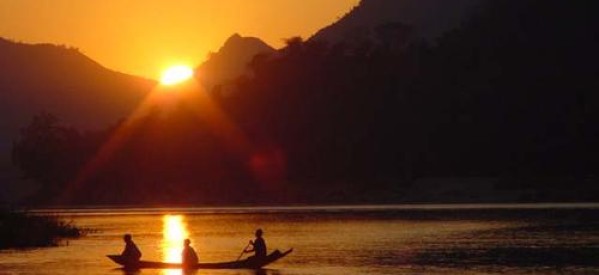Controversy over the Mekong “Friendship Bridge”

The ‘friendship’ bridge across the Mekong River between Thailand and Laos may prosper trade at the cost of destabilizing livelihoods. As the fourth “friendship” bridge across the Mekong River, between northern Thailand and Laos, waits to open later this year, agreements for a fifth one, also between Thailand and Laos, and a sixth, between Laos and Myanmar, have just been announced. When these bridges, and many more that are sure to come, are done, trade, investment and tourism will flow more easily across the entire Greater Mekong sub-region, Southeast Asia’s emerging economic hub.
Ever since the first “friendship” opened in April 1994 – a 1.8 km road and railway link between Thailand’s Nong Khai province and Laos’ Vientiane, built by Australian companies through a $30 million Australian aid – the Thai’s have taken over the initiative since Laos’ importance as a potential market becomes evident. Both countries have had quarrels in the past, and have even now, sharing a long, common border, but both have expressed a desire to keep the Mekong as a river of peace and friendship.
Thai loans have helped build Laotian roads and airports. By 2015, a $55 million Thai loan will connect Vientiane with the Thai border by a railway. Both countries want to double their bilateral trade to $8 billion in the next couple of years. More than anything else, Laos has immense hydropower resources that the Thais have helped develop so they can buy the electricity back to meet their needs.
The second “friendship” bridge opened in January 2007 and is a $70 million facility, mostly funded by the Japanese, connecting Thailand’s Mukdahan province and Laos’ Savannakhet. The third, between the Thai province of Nakhon Phanom and Laos’ Khammouane, followed four years later, in November 2011, with the Thai government picking up the entire $57 million tab. But it’s the fourth, almost complete, that’s drawing all the attention right now, since it involves the Chinese and sits on the strategic north-south corridor linking Kunming, in China’s Yunnan province, with Bangkok, and, by extension, Singapore.
The $64 million fourth bridge, funded equally by China and Thailand, spans the Mekong at a point that the Thais describe as the “golden gate” to Indochina, between Chiang Khong in Thailand’s northern Chiang Rai province and Houayxay in Laos’ Bokeo. It’s this bridge that’s going to open it up all, and Thai and Chinese investors are lapping up land on both sides of the bridge, expecting the crossing to be transformed into a thriving new centre of tourism and business.
But, besides being a river of hope, the Mekong is also proving to be somewhat of a river of fear. While the hope springs from its bridges, the fear arises from a growing number of dams that threaten to tweak the river’s flows and destabilize the livelihood of millions. The 4,000 km river, 12th longest in the world and seventh in Asia, already has five Chinese dams in its upper reaches – with plans for 19 more in a gigantic, $9.6 billion endeavour to produce 24,000 Gw of electricity for Yunnan every year – and the first mainstream dam in its lower reaches is now ready to be built at Xayaburi in Laos.
After a long delay and despite criticisms, the Laotian government has decided to go ahead with it. The main fears from dams like Xayaburi, which have evoked strong reactions from Cambodia and Vietnam, are that they will throw the world’s second biggest freshwater fish habitat after the Amazon, famous for the giant Mekong catfish, and the river’s sediment flow into disarray. This, in turn, will put the livelihoods of millions of fishermen in Laos, Cambodia, and Vietnam in grave danger.
Fish harvests, it’s feared, might decline by as much as half. Laos’ hydroelectricity potential is said to be huge, around 26,000 Mw, and the government is determined to exploit its economic benefit to the fullest, serving as a sort of “battery” for the neighboring countries. Only 10 per cent of the potential has been tapped so far, and reports say the government intends to build up to 70 dams on the Mekong and its tributaries.
It has reached agreements to sell up to 8,500 Mw of electricity to Thailand and 10,000 Mw to Vietnam by 2020. In return, it will earn handsome amounts of foreign exchange – $4 billion from Xayaburi alone over the 29-year life of the concession. So, for now, as Laos sees it, the environmental debate can wait. It claims that the design of the Xayaburi dam is mindful of the problems involved and provides for their solutions. It will be a low barrage that will allow sediment to flow through its pondage, while a fish-pass system will let all kinds of fish unhindered passage in both up and downstream directions. One has to wait and see if it actually works the way Laos says it will, but as of this moment, Mekong electricity is a cash cow too valuable for it to sacrifice.






